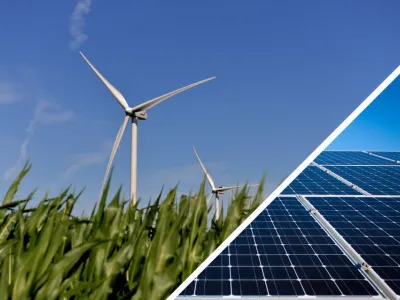Legislature advances a bill to decarbonize Minnesota electricity by 2040

Hearings begin this week on a bill to fully decarbonize Minnesota’s electricity sector. The bill, authored by Representative Jamie Long (HF 7) and Senator Nick Frentz (SF 4) and supported by Governor Walz, would require electric utilities to provide carbon-free power by 2040, ten years earlier than Xcel Energy’s and Minnesota Power’s current commitments.
CUB supports this bill. The electricity system can and must decarbonize quickly to address the climate crisis, and we must increasingly use clean electricity for heating, transportation, and other things that are currently powered by fossil fuels.
This bill sets a carbon-free standard in a flexible manner. It allows utilities and the Public Utilities Commission to determine the best path to 100% clean electricity, and it does so while protecting consumers.
CUB is respectfully urging lawmakers not to allow concerns about energy costs to delay action. CUB is very concerned about the increase in energy costs over the last couple of years and the effects that high energy costs are having on many Minnesota households. However, renewable energy is typically the least expensive electricity option. Per kilowatt-hour of energy, renewables are cheaper than gas generation and far cheaper than coal. Additionally, wind and solar do not require fuels (like gas or coal), whose prices can vary wildly at a cost to ratepayers. Of course, the grid needs different types of flexibility to operate with high levels of intermittent wind and solar, but generally, customers benefit from the relatively low costs of renewable energy.
The question, then, is: how much intermittent power can the grid reliably handle, and how quickly? The benchmarks in this bill – 90% carbon-free by 2035 and 100% carbon-free by 2040 – are aggressive. Studies show that utilities can reach upwards of 90% clean electricity without risking reliability or increasing costs. (See, for example, reports from GridLab and the National Renewable Energy Laboratory.) In fact, ratepayers will likely pay too much if utilities don’t move quickly to cost-effective clean energy solutions. However, we cannot say with complete certainty that Minnesota can achieve 100% carbon-free electricity by 2040 without issues. Technology and grid management solutions are advancing quickly, and while we believe it will be possible, the final 10% requires some faith.
The 2007 passage of Minnesota’s Renewable Energy Standard required similar faith, at a time when many were concerned about the grid’s ability to manage 25% intermittent power generation. Minnesota’s electricity mix is now 30% renewable, and studies show it can go much higher without issue. However, it is important that this bill preserves an “offramp” in the current statute: if it becomes too expensive or if it would compromise reliability to meet the milestones in the bill, then the standards would not be enforced.
This bill makes sure that Minnesota’s electricity system decarbonizes at the pace that’s required. It builds on the knowledge and the plans of our utilities. And it does so with crucial protections for Minnesota consumers.